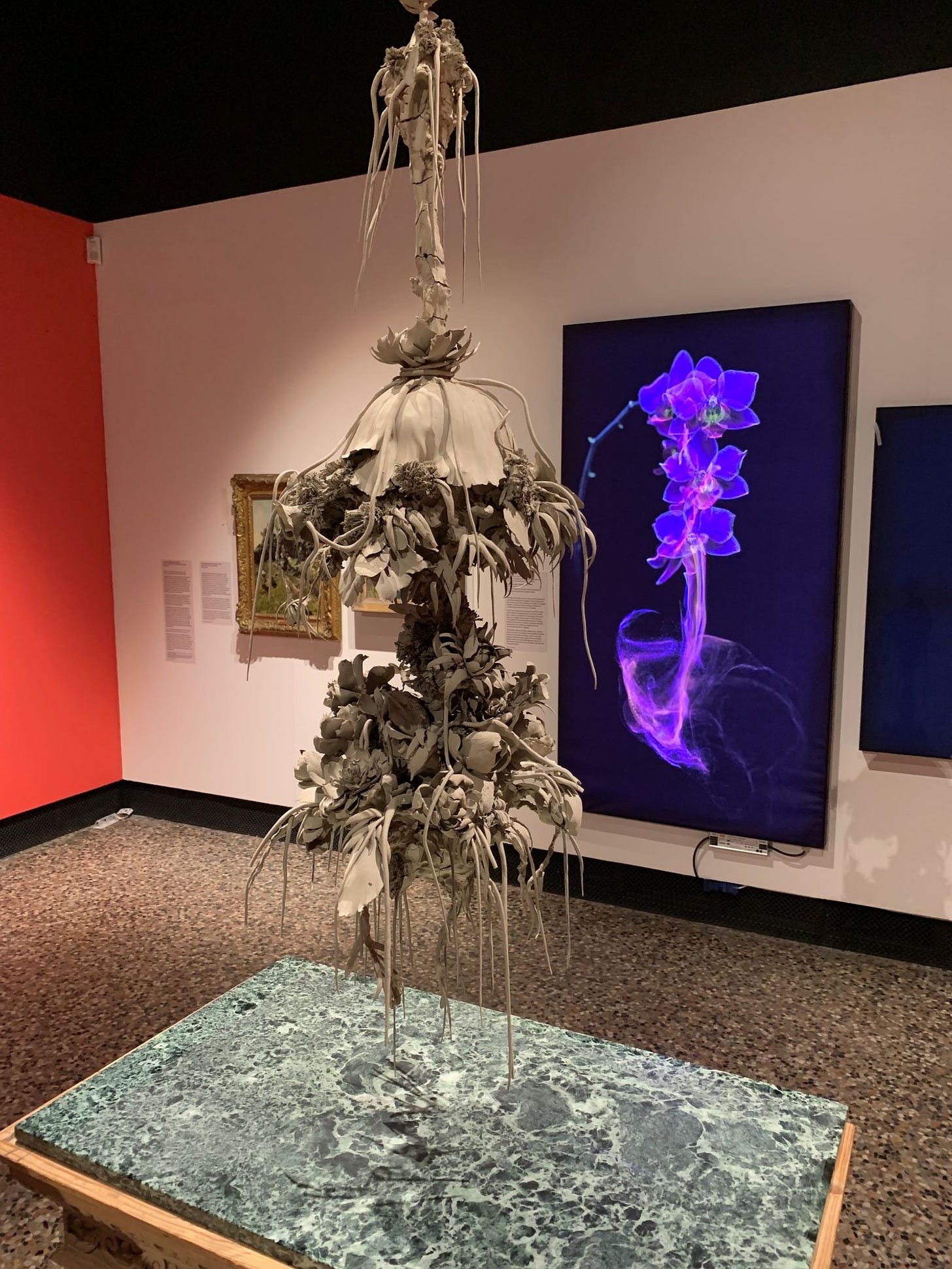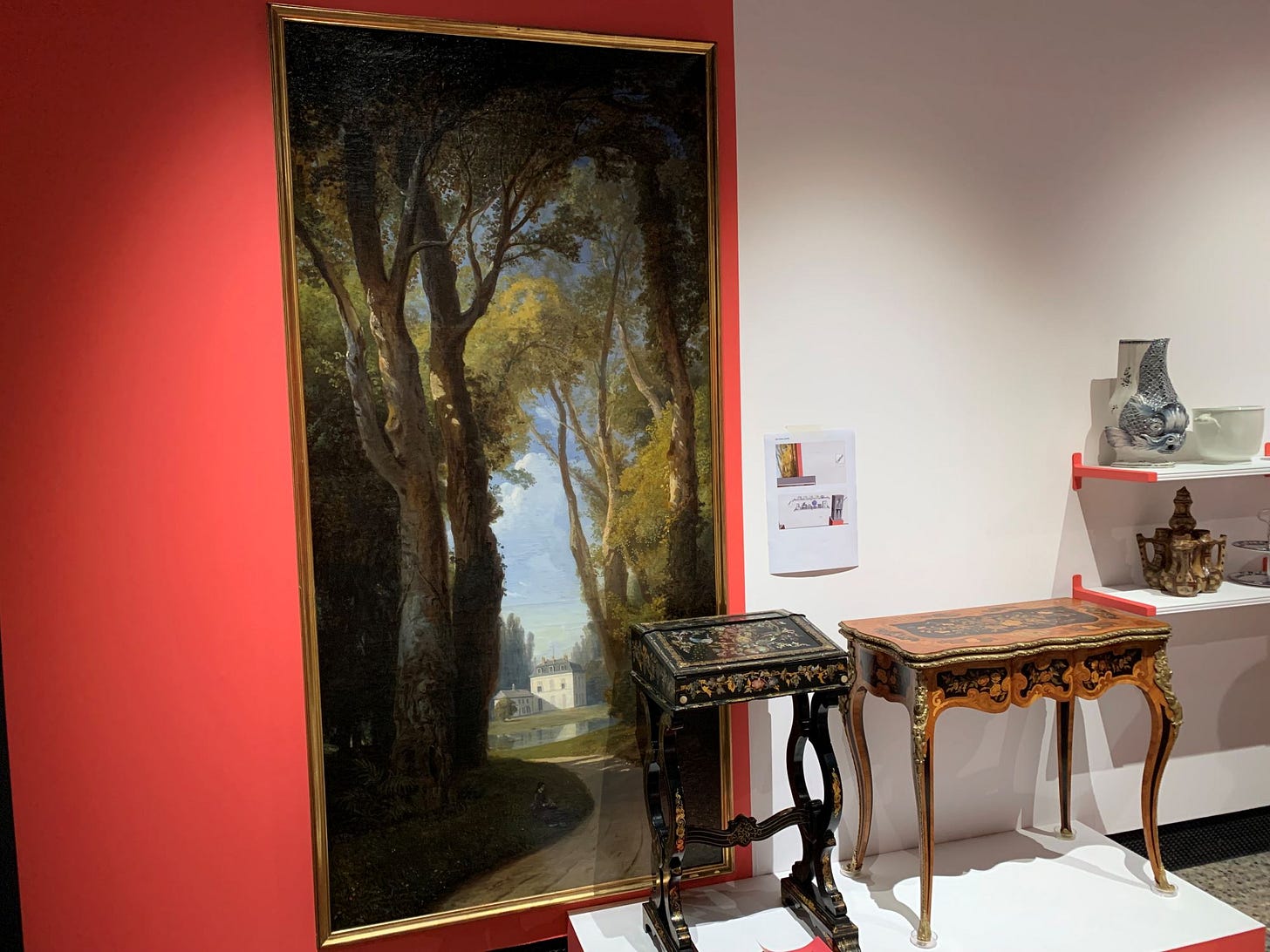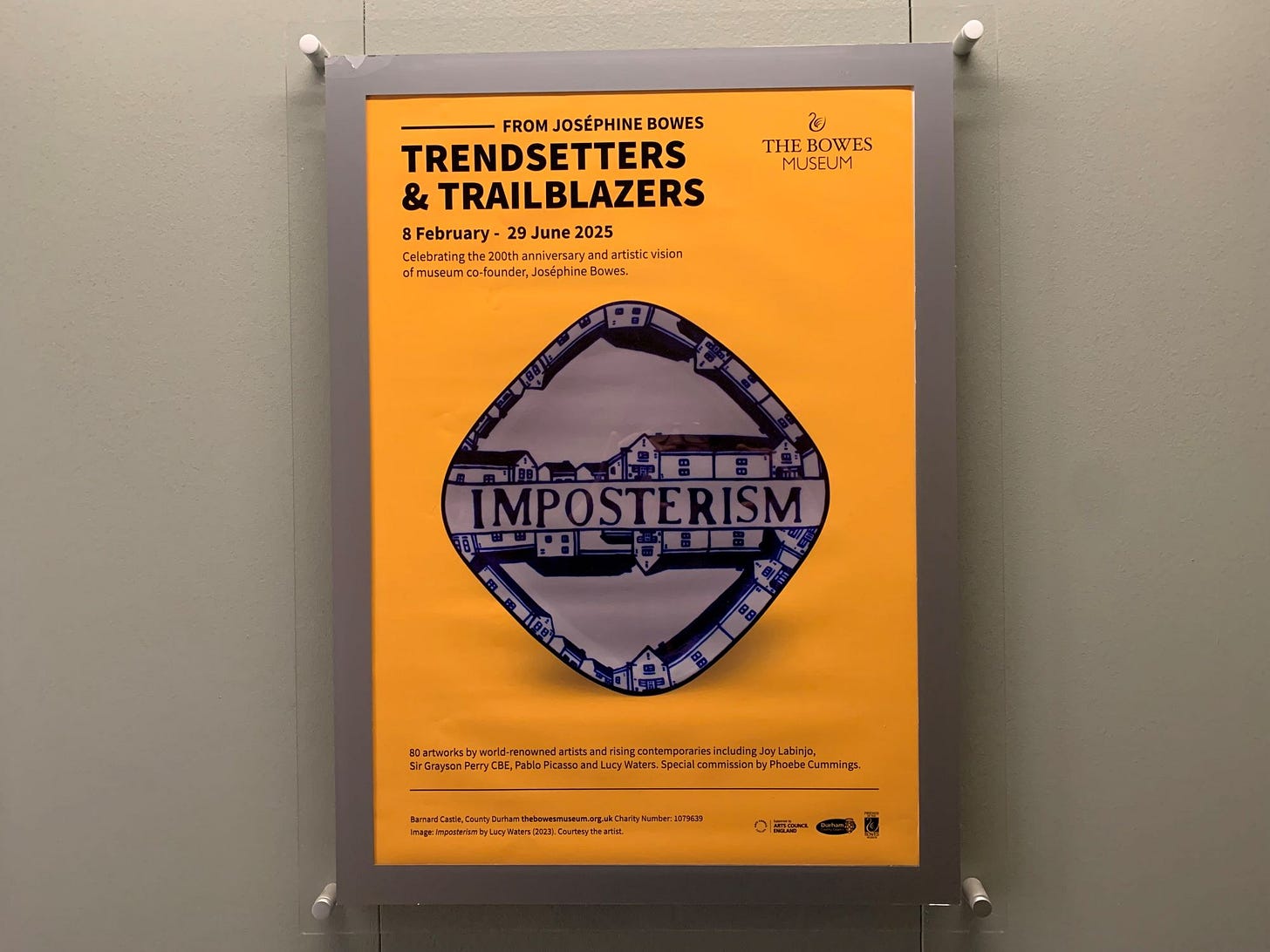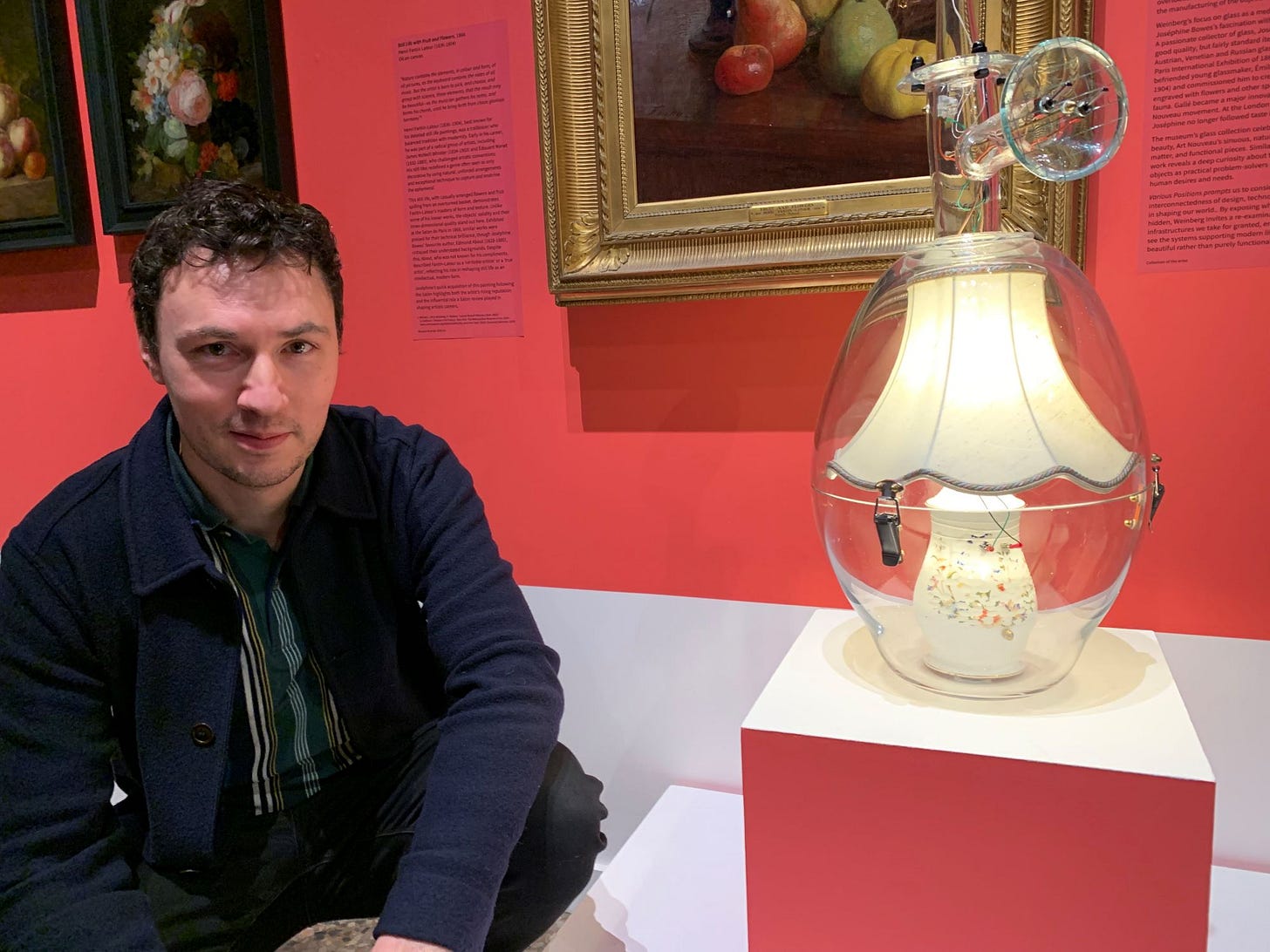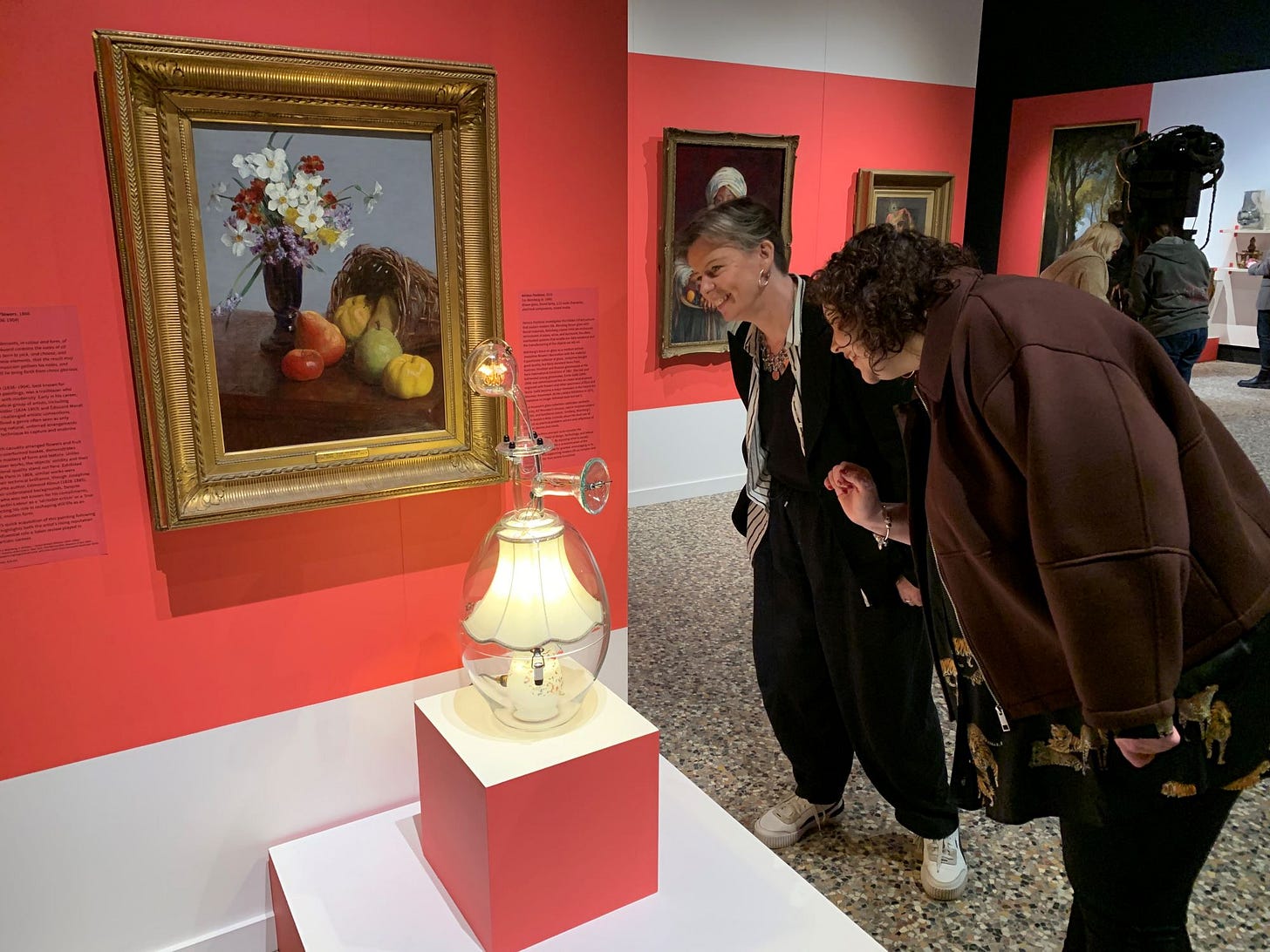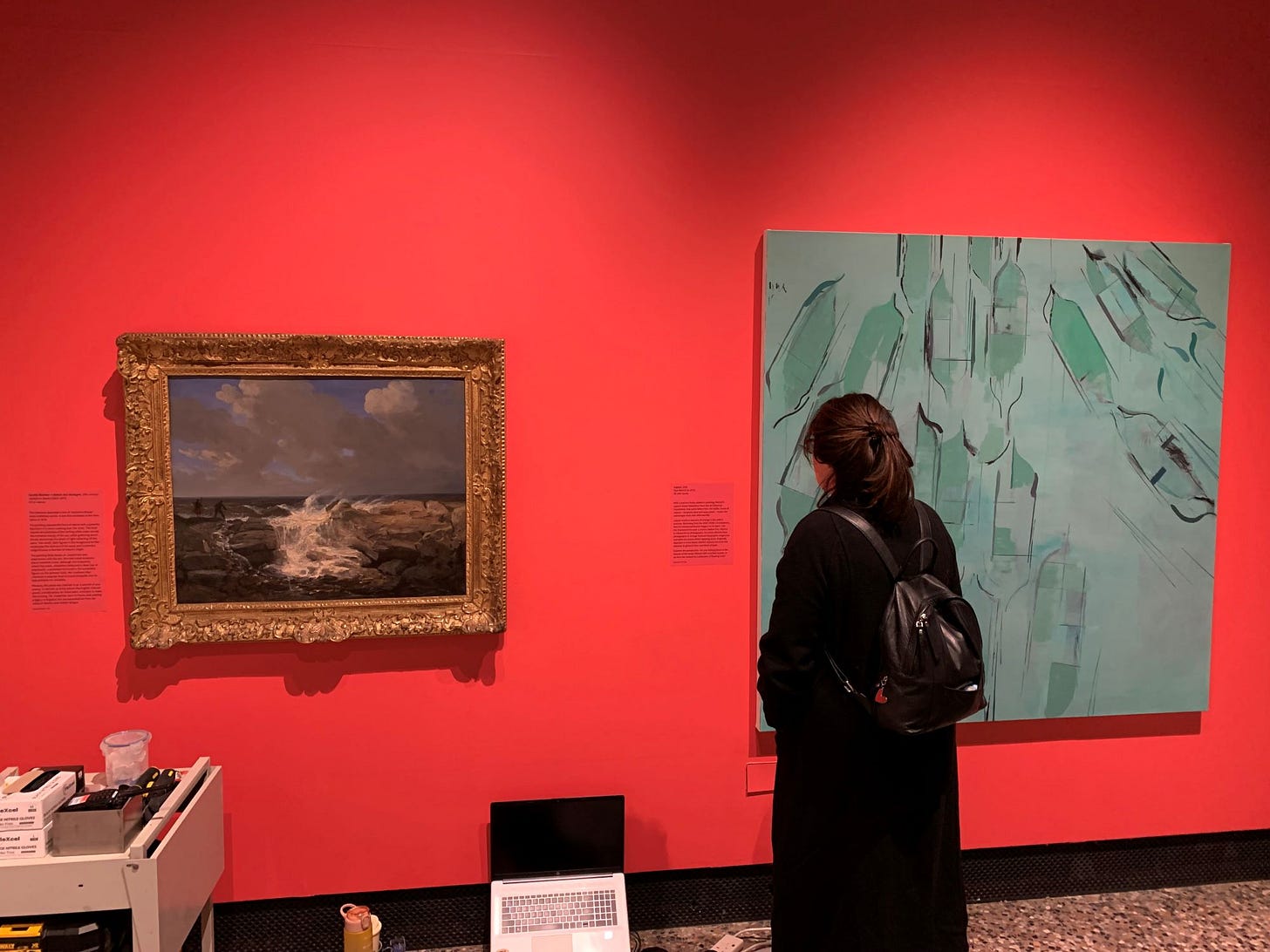What would Joséphine be collecting now?
Meet some of those involved in her bicentenary exhibition at the Bowes Museum
What you see first as you enter the Bowes Museum’s homage to Joséphine Bowes is a table with bird legs by the late Swiss artist Méret Oppenheim who flirted with Surrealism before distancing herself from it.
The leggy item of furniture – labelled Traccia (Table with Bird’s Feet) Cassina Edition and dated 1973 - is in a display case, as if to stop it strutting off with the Picasso bird vase perched on top of it.
To the left, dangling like a chandelier, is the exhibition’s new commission, a fabulously intricate and fragile-looking sculpture by Phoebe Cummings who made the piece on this very spot in her signature material of unfired clay.
On the day I visited, a dance performance scheduled for a room above the gallery was relocated – just to be on the safe side.
Picasso, Grayson Perry, Gillian Wearing… there are big names from past and present in this busy exhibition, From Joséphine Bowes: Trendsetters and Trailblazers. But it’s Newcastle artist Lucy Waters, born in 1999, whose work was chosen for the poster.
She was thrilled, as you’d imagine, having graduated from Newcastle University as recently as 2023 (a master’s in fine art complementing the BA earned during Covid-disrupted undergrad studies on the same campus).
She was also surprised. “I never expected any of the opportunities I’ve had recently.” she says modestly.
Her Bowes poster piece is a square plate with rounded corners and the word ‘IMPOSTERISM’ emblazoned across it corner-to-corner in willow pattern blue on white.
Vicky Sturrs, the museum’s director of programmes and collections, believes it would have appealed to Joséphine Bowes, the French actress who married the illegitimate son of the 10th Earl of Strathmore and Kinghorne.
“Josephine had to navigate a class system in France but also here in Victorian Britain with a husband (John Bowes) who bought her a title to legitimise her.
“There are things around covert class disadvantage that she as a woman and a female artist would have experienced. Issues raised in Lucy’s work would have been as relevant in Joséphine’s time as they are today.”
Lucy has five pieces in the exhibition, displayed alongside items from the Bowes collection in keeping with the idea of juxtaposing actual purchases with things that might have caught Joséphine’s eye today.
Read more: Musician is playing the Pennine Way
That’s the big question here, asked of a curious and discerning woman whose collecting instincts roved across artforms. What would Joséphine Bowes be filling her museum with if she were still alive and collecting now?
The flippant answer might be stairlifts since this year (no-one seems sure when exactly) she would be turning 200. That’s a lot of candles to fit on a cake, although a large one wouldn’t have stretched Joséphine financially.
She sold a wedding present from John in order to buy the plot in Barnard Castle for the Bowes Museum, intended to accommodate 15,000 acquisitions.
And it wasn’t any old wedding present. It was the stately Château du Barry, one-time home of the last mistress of Louis XV (the Comtesse du Barry, destined for the guillotine in 1793).
There’s a painting of it in this exhibition marking Joséphine’s bicentenary and intended to position her rightfully front and centre of the Bowes story, rather than as wifely adjunct.
“From our archive we know that the rationale for the museum was Josephine’s, the concept was Josephine’s, the money used to buy the land belonged to Josephine,” says Vicky.
The tall painting is the work of an accomplished artist and will surprise visitors unaware that the museum’s co-founder (although neither lived to see it open) not only loved art but was handy with brush and palette.
“When we’re talking about trendsetters and trailblazers, Joséphine was a contemporary collector,” says Vicky.
“This is a museum but it started with the idea of it being a contemporary space.
“There were more works by living artists in the collection when the museum opened in 1892 than there were in the national institutions.
“That’s why we’ve got work here from the 1700s right through to 2025 and including a brand new commission.”
Old, new and extremely new are arranged in four sections according to what is known of Joséphine, her life and artistic preferences.
Lucy’s work sits in the section dedicated to Collecting and Belonging. If Joséphine suffered from imposter syndrome, these pieces might have tickled her with their slogans subverting the cosy parlour quaintness of willow pattern.
A Lucy Waters plate showing a bucolic scene reminds us that the UK has (or had when it was done) more food banks than McDonalds outlets. A cake stand is emblazoned with the words ‘Levelling Up’, a teapot with ‘Covert Class Disadvantage’.
Lucy’s sense of herself was challenged when she entered her postcode into a web page about university scholarships and found she lived in a deprived area.
“I’m not naïve but I was quite taken aback. I started looking at the area where I lived and expanded from there really. I found certain things could be applied to the whole country.
“I always keep a sketchbook of phrases so if I read something in an article or overhear something interesting, I note it down.
“All the pieces I source from charity shops and they’re nearly always entirely plain. I’ll then stencil on the chosen text and paint everything, using small cocktail brushes and a certain type of porcelain paint.
“The pieces don’t get fired in a traditional kiln but just in the oven at home so it has that domestic quality to it.”
If imposter syndrome sometimes strikes Lucy, it’s when people take her for a ceramicist who makes her own plates and teapots.
“I always feel a little bit of a fraud. But a lecturer once said, ‘Well, a painter wouldn’t weave a canvas from scratch’.”
As one of the winners of the annual Emerging Artist Award, Lucy’s work will also be displayed from September at the National Trust’s Seaton Delaval Hall.
Vicky Sturrs spotted Lucy’s work, and also that of Zac Weinberg, in last year’s Open Submission exhibition at Baltic.
Zac’s creation, Various Positions, comprises blown glass, found lamp, 1/12 scale chandelier (intended for a dolls’ house), electrical components and mixed media.
An American living in Sunderland, he takes mock umbrage at the idea that his lamp might have been found at a charity shop. In fact, he says, it came from a car boot sale and cost £4 despite being incredibly ugly.
He went to work on its decorative surface and now we see it incorporated into this piece, cocooned like a ship in a bottle.
“It’s a composition of glass components joined by plumbing fixtures which I make myself in the studio,” he explains.
“The intention was to use the transparency of the glass to illustrate the relationship between the objects, cause and effect. Everything has an electrical component so the wires are on view and the switches are all off the shelf.
“And it all works. Functionality is a key intention of what I make so I’m working in that grey area between design, functional object and sculpture.
“But it starts with the found object. A big part of my practice is just finding things and I’m not afraid to chase an idea if it appeals and then takes me in a completely different direction. I call them fruitful detours.
“I had a show in 2018 where I presented four of these and that was the birth of this kind of series, putting on display things like pipes that are normally hidden from view.”
Zac’s bulbous creation is displayed in the Nature section in front of Still Life with Fruit and Flowers, a vibrant work by 19th Century French artist Henri Fantin-Latour.
The artists had no say in the juxtaposition but Zac says: “A comment I often get is that my pieces remind people of their grandmother’s house or something owned by a great aunt.
“I’m not afraid of kitsch. I think it’s kind of integral to what I do, that fluctuation between highbrow and lowbrow. Times change and what was once esteemed is now kitsch and it’s an ever-changing spectrum.”
The label explains that Joséphine was fascinated with glass and her tastes in collecting and commissioning influenced others. At the very least, she and Zac would have had an interesting conversation.
There’s so much to feast the eyes on here. Joséphine’s fear of the sea (apparently a second vessel would be chartered to accompany the one in which she made the Channel crossing… just in case) inspires a section, Open Skies and Sea, featuring Lagoon by North East painter Paul Merrick.
“We don’t know, and Paul won’t tell us, whether you’re looking up at the hulls while diving underneath them or looking down on sunken boats, so that felt really appropriate for Joséphine,” smiles Vicky.
Elsewhere you will see a painting by Newcastle University graduate Joy Labinjo, who had an exhibition at Baltic in 2019, and early paintings by Sutapa Biswas who also exhibited there in 2022.
The Bowes Museum collection now amounts to a pretty staggering 56,000 objects.
Intriguingly, Vicky says: “Our intention with this show is to set a course for contemporary collecting and say these are things we might collect and this is the direction we’ll be going in.
“The collection for a long time stopped at about 1900 although there were a few pieces added. That was not the intention. It was intended to be relevant to the world as it exists. If Joséphine was still alive she’d still be collecting.”
From Joséphine Bowes: Trendsetters and Trailblazers runs until June 29. Find details of opening times and admission prices on the Bowes Museum website.




